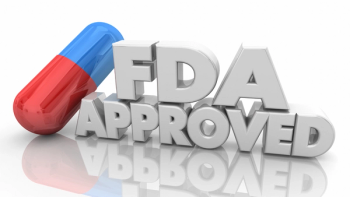White House and European Union Announce Long-Awaited Details on Pharma Tariffs
Key Takeaways
- The framework agreement imposes tariffs on EU imports, including pharmaceuticals, capped at 15%, with an MFN clause potentially reducing tariffs.
- President Trump has emphasized domestic pharmaceutical manufacturing, influencing the decision to impose unique tariffs on pharma goods.
A joint statement lays out the framework for a potential trade agreement.
The White House announced its plan for tariffs on imports from the European Union (EU).
In a joint statement,1 the White House and the EU announced the details of what is being called a framework for an agreement on reciprocal, fair, and balanced trade. While the agreement is wide reaching and impacts all goods being imported, pharmaceutical goods are subject to unique rules.
How much will pharma goods from the EU be taxed?
Broadly speaking, all imports from the EU will have a tariff placed on them that does not exceed 15%. However, there is a MFN clause, so some goods may have lower tariffs placed on them, depending on trade deals with other countries. The agreement does specify that the tariffs will not exceed 15%. Generic pharmaceuticals, their ingredients, and chemical precursors are included under this rule. This goes into effect September 1 of this year.
Pharmaceuticals in general will also be subject to the MFN rule and will not have tariffs that exceed 15%.
According to the announcement, the EU is expected to introduce the necessary legislative proposals in a timely manner, although a specific date is not set.
The agreement comes after months of speculation and contradictory statements, sometimes provided by President Trump himself. While broader tariffs have been a hotly debated topic since he took office, pharmaceuticals have been a uniquely complicated story. When the first round of tariffs were announced for countries around the world, pharmaceutical goods were not included, as if traditionally the case with tariffs.
However,
In April, the pharma industry once again
A few days later, the President
In May, the President further complicated the situation by announcing his
Later, in August, he added more confusion and stress to the situation by musing about placing
With the agreement with the EU, however, it makes it clear that pharma goods are on the negotiating table and that rules can be put in place to prevent the massive potential tariffs that have been promised.
Sources
- Joint Statement on a United States-European Union Framework on an Agreement on Reciprocal, Fair, and Balanced Trade. The White House. August 21, 2025.
https://www.whitehouse.gov/briefings-statements/2025/08/joint-statement-on-a-united-states-european-union-framework-on-an-agreement-on-reciprocal-fair-and-balanced-trade/
Newsletter
Lead with insight with the Pharmaceutical Executive newsletter, featuring strategic analysis, leadership trends, and market intelligence for biopharma decision-makers.





